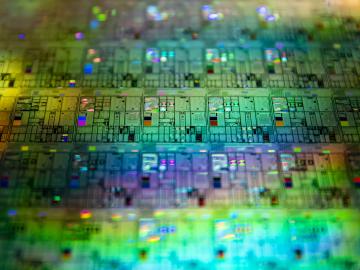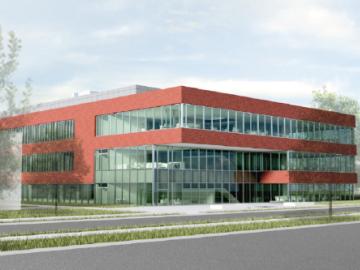
Filter News
Area of Research
- (-) Supercomputing (64)
- Advanced Manufacturing (1)
- Biology and Environment (23)
- Computational Engineering (1)
- Computer Science (9)
- Electricity and Smart Grid (3)
- Energy Science (112)
- Functional Materials for Energy (1)
- Fusion and Fission (4)
- Materials (76)
- Materials for Computing (14)
- National Security (22)
- Neutron Science (25)
- Nuclear Science and Technology (6)
- Quantum information Science (9)
- Sensors and Controls (1)
- Transportation Systems (2)
News Topics
- (-) Grid (5)
- (-) Machine Learning (15)
- (-) Molten Salt (1)
- (-) Physics (8)
- (-) Polymers (2)
- (-) Quantum Computing (20)
- (-) Quantum Science (25)
- (-) Transportation (6)
- 3-D Printing/Advanced Manufacturing (5)
- Advanced Reactors (1)
- Artificial Intelligence (37)
- Big Data (22)
- Bioenergy (9)
- Biology (11)
- Biomedical (17)
- Biotechnology (2)
- Buildings (4)
- Chemical Sciences (5)
- Computer Science (96)
- Coronavirus (14)
- Critical Materials (3)
- Cybersecurity (8)
- Energy Storage (8)
- Environment (22)
- Exascale Computing (26)
- Frontier (32)
- Fusion (1)
- High-Performance Computing (43)
- Isotopes (2)
- Materials (15)
- Materials Science (16)
- Mathematics (2)
- Microscopy (7)
- Nanotechnology (11)
- National Security (8)
- Neutron Science (13)
- Nuclear Energy (4)
- Partnerships (1)
- Security (6)
- Simulation (16)
- Software (1)
- Space Exploration (3)
- Summit (43)
Media Contacts

In the early 2000s, high-performance computing experts repurposed GPUs — common video game console components used to speed up image rendering and other time-consuming tasks

In the race to identify solutions to the COVID-19 pandemic, researchers at the Department of Energy’s Oak Ridge National Laboratory are joining the fight by applying expertise in computational science, advanced manufacturing, data science and neutron science.

We have a data problem. Humanity is now generating more data than it can handle; more sensors, smartphones, and devices of all types are coming online every day and contributing to the ever-growing global dataset.

A team from the ORNL has conducted a series of experiments to gain a better understanding of quantum mechanics and pursue advances in quantum networking and quantum computing, which could lead to practical applications in cybersecurity and other areas.

Scientists at have experimentally demonstrated a novel cryogenic, or low temperature, memory cell circuit design based on coupled arrays of Josephson junctions, a technology that may be faster and more energy efficient than existing memory devices.

A joint research team from Google Inc., NASA Ames Research Center, and the Department of Energy’s Oak Ridge National Laboratory has demonstrated that a quantum computer can outperform a classical computer

OAK RIDGE, Tenn., May 7, 2019—Energy Secretary Rick Perry, Congressman Chuck Fleischmann and lab officials today broke ground on a multipurpose research facility that will provide state-of-the-art laboratory space

OAK RIDGE, Tenn., March 11, 2019—An international collaboration including scientists at the Department of Energy’s Oak Ridge National Laboratory solved a 50-year-old puzzle that explains why beta decays of atomic nuclei

Oak Ridge National Laboratory scientists have created open source software that scales up analysis of motor designs to run on the fastest computers available, including those accessible to outside users at the Oak Ridge Leadership Computing Facility.
OAK RIDGE, Tenn., Feb. 12, 2019—A team of researchers from the Department of Energy’s Oak Ridge and Los Alamos National Laboratories has partnered with EPB, a Chattanooga utility and telecommunications company, to demonstrate the effectiveness of metro-scale quantum key distribution (QKD).


